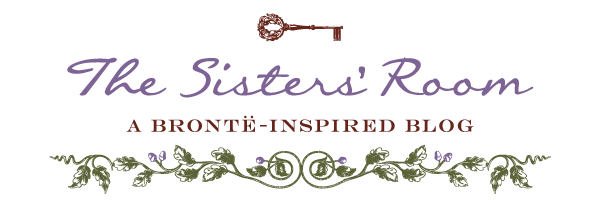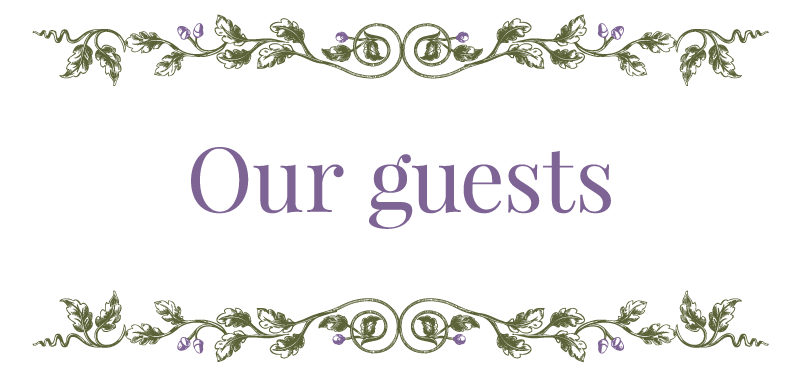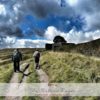We’re really glad we had the chance to interview Marianna D’Ezio, translator of Jane Eyre (2011) for the Italian publisher Giunti Editore, but also university teacher of English Language and Translation in Rome, and important literary expert. Marianna is the perfect guest for our blog, not only because she’s extremely nice, but also because her studies are specifically focused on nineteenth century literature, travel literature and women writers! We love all these topics, and we’re sure that you readers love them too… so don’t miss this wonderful interview and find out more about translating one of the most famous Brontë novels.
– Marianna, where does your passion for English language and culture come from and why have you chosen to become a translator?
 My passion for English language and literature comes from the privilege I had of being taught at school and university by teachers– all women, and I don’t think it’s a coincidence- who were able to make me appreciate literature and transmit their passion for Shakespeare, Jane Asten, the Brontë sisters… The best memories I have from high school, as a matter of fact, are related to some handwritten notes about Shakespearian plays which my teacher wrote down herself – at the time she could have used a typewriter at best, but perhaps writing by hand was faster for her. She would pass the notes to the class on copies that I still keep today. Once at university then, I had the good fortune to find out about female and male writers who were unknown to me before, like the British play writers from the 60s and the 70s – Caryl Churchill, Timberlake Wertenbaker, etc., which I really ended up loving, and Emily Dickinson especially. Finally, during the doctorate years, my superiors showed me the charm of the 18th Century which entered my heart and my soul, and has been for many years not only my research field but also a safe harbour where I can always return to trace back the origins of my ideas and everything I’ve become. The experience of translation itself instead, was a coincidence. I started to translate especially for economical reasons, as many others do, and even though translations from Italian were paid much less than those from Chinese, Arabic or Russian, it was however a task that I could easily manage despite the crazy schedule of a freelance living in such a big city as Rome. Then, the offer to translate Jane Eyre came… not only was it one of my favourite novels ever, but also the book with which I initiated my passion for literary critics by writing and publishing my first essay in a small literary journal. Apparently, I owe a lot to Jane Eyre, in more than one way.
My passion for English language and literature comes from the privilege I had of being taught at school and university by teachers– all women, and I don’t think it’s a coincidence- who were able to make me appreciate literature and transmit their passion for Shakespeare, Jane Asten, the Brontë sisters… The best memories I have from high school, as a matter of fact, are related to some handwritten notes about Shakespearian plays which my teacher wrote down herself – at the time she could have used a typewriter at best, but perhaps writing by hand was faster for her. She would pass the notes to the class on copies that I still keep today. Once at university then, I had the good fortune to find out about female and male writers who were unknown to me before, like the British play writers from the 60s and the 70s – Caryl Churchill, Timberlake Wertenbaker, etc., which I really ended up loving, and Emily Dickinson especially. Finally, during the doctorate years, my superiors showed me the charm of the 18th Century which entered my heart and my soul, and has been for many years not only my research field but also a safe harbour where I can always return to trace back the origins of my ideas and everything I’ve become. The experience of translation itself instead, was a coincidence. I started to translate especially for economical reasons, as many others do, and even though translations from Italian were paid much less than those from Chinese, Arabic or Russian, it was however a task that I could easily manage despite the crazy schedule of a freelance living in such a big city as Rome. Then, the offer to translate Jane Eyre came… not only was it one of my favourite novels ever, but also the book with which I initiated my passion for literary critics by writing and publishing my first essay in a small literary journal. Apparently, I owe a lot to Jane Eyre, in more than one way.
– We know that your research is especially focused on female literary figures – what do you think is the mark that the Brontë sisters left in the literature of our century?
Over the years I’ve learnt to love the Brontë sisters for many different reasons. I’ve always been fascinated by them, since when, back in highschool, the teacher I mentioned before showed us the film version of Wuthering Heights with Laurence Olivier. To be honest, however, I think the strenght of the Brontë sisters is much more than just being able to reach all kinds of public– both readers and the audience at a cinema, for example- which is something that undobtely happened over the last years (let’s just think of the countless reinterpretations of their novels). The reason why, I believe, the’ve left such an indelible mark in literature, it’s surely because they have all created characters (especially female characters) that are at once “common” – so the reader can easily empathize with it- and “exceptional” for that specific historical period. I’m thinking of Jane Eyre, for example, who wakes up at night with the sudden idea of placing an advertisement in the newspaper to find a job and being able to support herself. It was something revolutionary for a woman from the moors, during the victorian age. We could also think of Bertha, locked up in the actic of Thornfield Hall, who will be considered as the symbol of redemption in a wonderful post-colonial interpretation of this character by Jean Rhys in his novel Wide Sargasso Sea, written in 1966.
– In 2011 you translated Jane Eyre for Giunti Editore publishing: is there any specific passage you enjoyed the most reading and translating?
There are many passages I love from Jane Eyre, and they keep coming to my mind very often. It happens especially while I’m teaching, and I make references to my translation. Perhaps there’s one I especially recall with pleasure, because it made me feel deeply proud of Jane, and it gave me the chance to understand the real meaning of the novel all the way, as a reader and a translator. It is that bit when Mrs Reed, who’s seriously ill, sends for Jane who’s at Thornfield, to ask her to go to Gateshead and assist her on her deathbed. That’s the moment when Jane has to communicate to Mr Rochester that she needs some days off work. The dialogue between the two of them is centred on the influence that Rochester thinks he has on Jane because of his social background and his being a wealthy person- just to give you an example, he takes out his “pocket-book” to pay what he owes her, whereas she only has a “purse”. Jane can’t help pointing out that if Rochester wanted to give her more money than necessary, she wouldn’t have any change to give back, so she would be in debt with him; conversely, if he gave her less than the amount due, then he would be in debt with her and that wouldn’t be convenient because it is a working relationship, and Rochester isn’t allowed to pay her less than what was agreed. Well, according to me, this is the dialogue that, better than other passages I could mention, “taught” me how to properly render Jane’s voice- a strong and peremptory voice, the voice of a woman who respects herself, her level of education and her role in society, despite the amount of money she has got in her “purse”.
– What was the most difficult aspect of translating Jane Eyre?
There where two very difficult aspects to render in this translation and unfortunately, as it often happens with translations, I had to surrender to one of them. I’m talking about the names of the places where Jane Eyre‘s story develops that, inevitably, I couldn’t translate – Gateshead, Lowood, Thornfield, all these names symbolically represent the struggles Jane Eyre had to face along the way. It was a painful surrender. Even more tricky were the descriptions of the moors landscape, particularly those in the last part of the novel, Moork House and its surroundings. I think that’s a strongly symbolic landscape, especially when St Johns asks Jane to marry him and follow him to India. These landscapes are still extremely clear and vivid in my mind like some sort of visual recollection, but translating them into words it’s a very different matter.
– And last, but not least: what’s your favourite Brontë novel and why?
As you may have guessed, my favourite Brontë novel is definitely Jane Eyre, even though the “struggle” between this novel and Wuthering Heights is hard… The truth is that I love them both but in different ways and in different moments of my life. There are some times when I feel closer to Catherine or Heathcliff, and other times when I feel more like Jane. This demonstrates – not to take anything away from Anne and his amazing The Tenant of Wildfell Hall– how much Brontë novels are dear to readers, because we can recognise ourselves in them, and they stay with us throughout life marking out each moment and its progression.
Did you like this interview? If Jane Eyre and Wuthering Heights are your favourite Brontë novels too, and you want to know more about the moors, you can’t miss these articles: Our Guest: Johnnie Briggs, Blue Badge Tour Guide, View From the Window- Top Withens, Flowers on the Moors – Article and Pictures by Maddalena De Leo






